
The product is packaged in the classic red and white style of HyperX, with a two-year warranty logo printed in the upper right corner. The rendering on the box shows us that it has RGB backlight, but its lighting effect is a circle of light strips around the waist, not on the blowout screen of the upper part of Quadcast's microphone, but its size and appearance should be roughly the same.
Like HyperX's headsets, DuoCast is Discord and TeamSpeak certified, and is perfectly compatible with both PC and game console platforms (including the newly released PS5). The three views of the back details are no longer available. It is worth mentioning that the official propaganda supports the HyperX NGENUITY driver to switch different lighting modes and corresponding settings. However, at present, the software can only be downloaded in the WIN10 store, which is more troublesome. I hope that the download support for NG software can be added to the official website as soon as possible.

In terms of contents, in addition to the instructions and the main body, there is also a shock-resistant buffer base (installed by default in the factory, of course, it can be removed directly) and a threaded adapter (with a bracket, the microphone can be "supported" on the desktop and can be adjusted at will). The other is a USB-C port cable about two meters long, and it is a pity that it is not equipped with a spray-proof sponge cover.
Previous Quadcast and HyperX SoloCast are available in black and white, but Hyper X DuoCast is currently only available in black, and it is not excluded that the rice white model will be introduced in the future. The appearance of the main body of the microphone is a common cylindrical shape. The surface of the body after matte treatment is delicate and full of feel. The lower light strip divides the microphone into upper and lower parts. The upper part, which occupies two-thirds of the body, is covered with blowout mesh, while the lower part is ear return and TYPE-C interface. The tone pickup knob is located just in between.
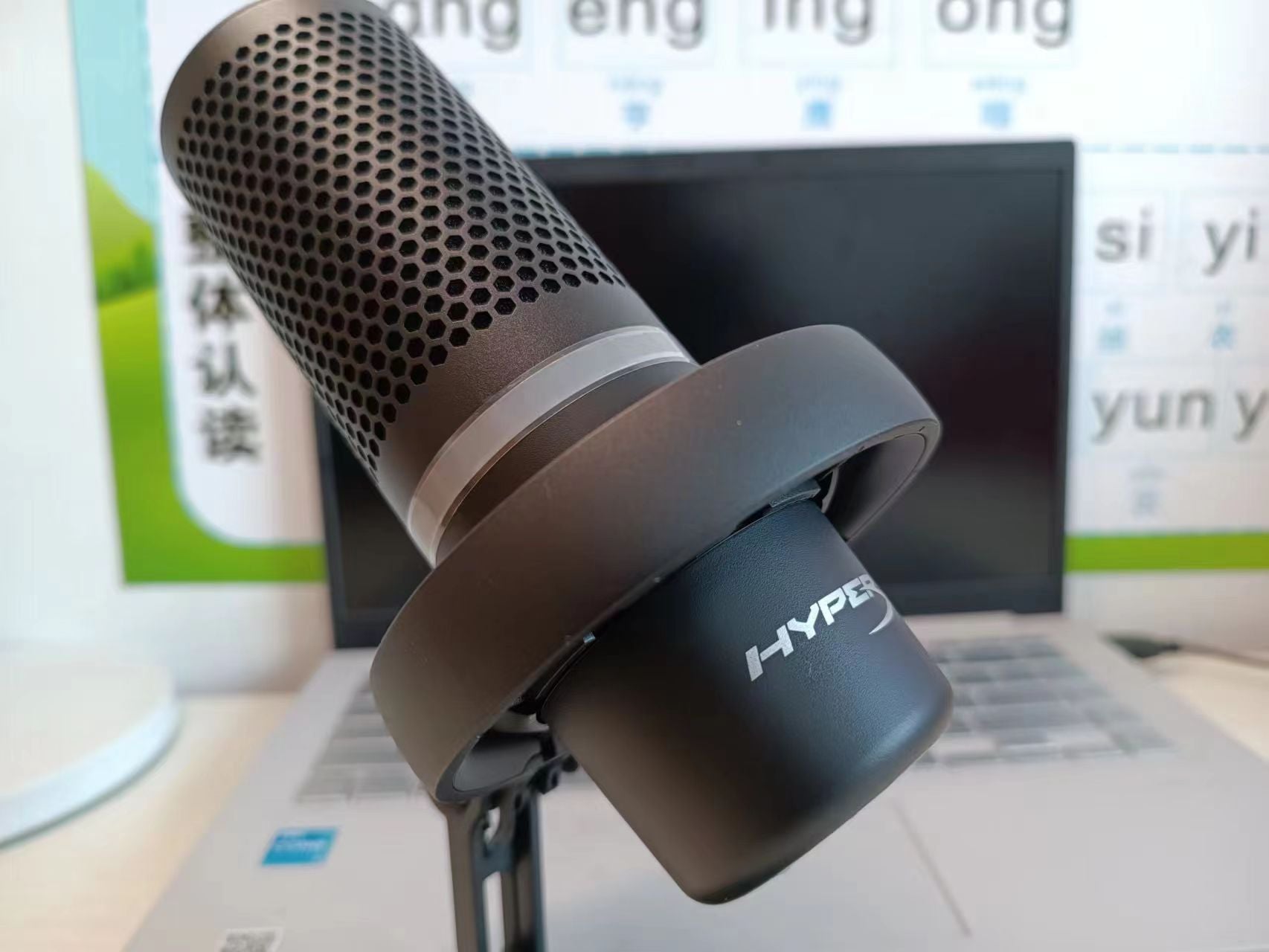
It is worth mentioning that the main body of DuoCast is not a standard cylinder, but is thick at the top and thin at the bottom, supported by a circular bracket. The main part of the microphone is plastic, and the body mesh and base are alloy, which ensures relative lightness (the main part plus the base and cable is about 500 grams).
DuoCast can provide 24-bit/96kHz high-resolution recording (supporting 96/48/44.1kHz sampling rate settings), connect to a computer, and use it directly without a driver. Let's take a look at the specific parameters: the frequency response range is 20Hz-20KHz, the sensitivity is -6dBFS (1V/Pa at 1kHz), and the signal-to-noise ratio is ≤ -70dBFS. As we all know, the performance of the microphone and the sound quality when picking up are determined by the sensitivity, frequency response, signal-to-noise ratio and other parameters. In short, the lower the negative value of sensitivity and the fluctuation value of frequency response, the better.
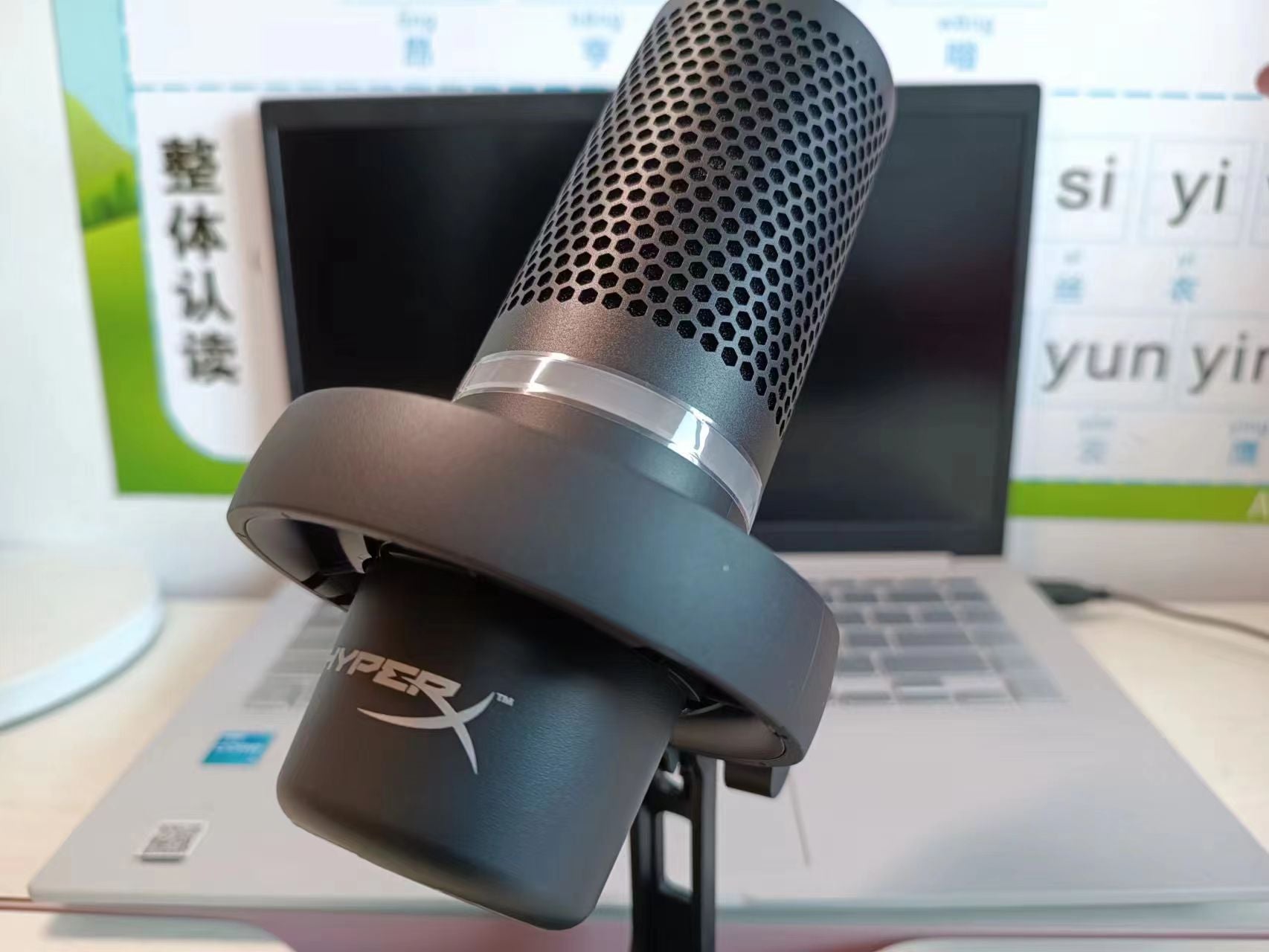
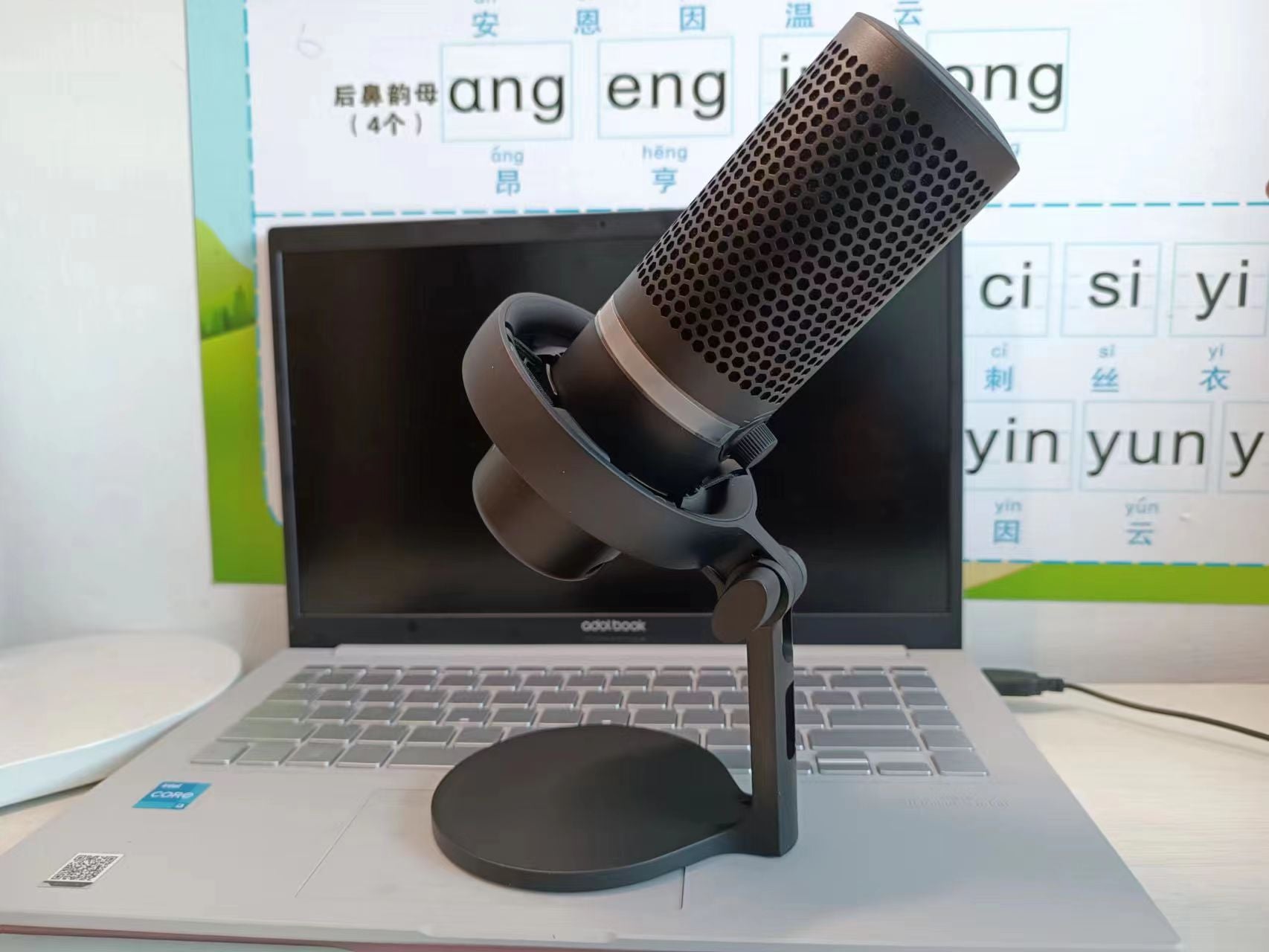
The top of the fuselage is a touch switch (the pickup hole of the unconventional microphone), which can be muted by one key. On certain occasions, we don't want the sound to be recorded, so we can shoot directly on the top of the camera, which is very convenient.
There is a knob in the middle of the white light strip, which can be rotated to switch the sound level, and pressed to switch between the two pickup modes of heart-shaped and omnidirectional. At this time, the light strip will also emit the corresponding light effect as a reminder (heart-shaped for contraction, omnidirectional for expansion). It is slightly smaller than the four modes offered in the Quadcast series (the other two are stereo and two-way), but it is enough for everyday use. From this aspect, we can also see HyperX's mid-range positioning of DuoCast (the entry version of HyperX SoloCast only points to the heart shape), and the bottom of LOGO also removes the gain adjustment of Quadcast S.
This knob has a scale on it, and it has a good sense of damping. It is silky and smooth to adjust, and it also ensures that there will be no noise interference when adjusting.

Let's talk about the difference between cardioid pickup and omnidirectional pickup. The two are mainly reflected in the direction of pickup. The former picks up the sound in front of the microphone, while the sensitivity of other directions is reduced, which is more suitable for recording human voice. The latter is open to all angles, the sensitivity of each direction is the same, and the recorded sound is richer. We can adjust it according to the actual scene, for example, the cardioid pickup can be used for synchronous communication between the team members in the game, to avoid the noise interference of the surrounding environment to the maximum extent; Omnidirectional is more balanced, which is suitable for multi-person dialogue and communication in podcast programs.
Its shock absorption bracket is very interesting. The big ring and the small ring are fixed by interwoven elastic ropes. It can absorb unnecessary vibration and avoid the influence of noise. No matter how the microphone body is shaken in the actual measurement, no sound will be made. However, its cables are not as bright red as QuadCast's. Instead, it is a pure black color matching unified with the fuselage.
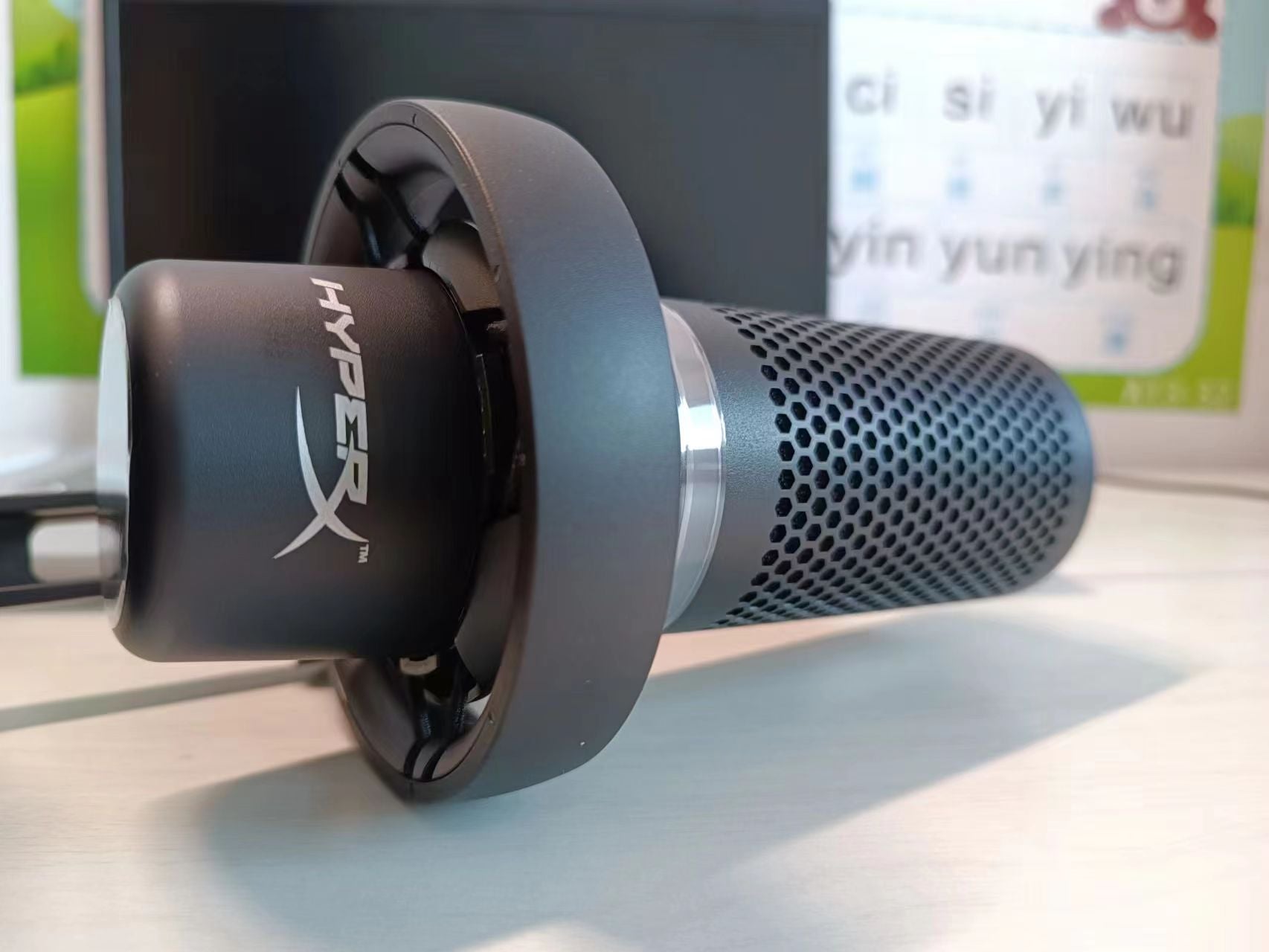
When the screw on the bracket is unscrewed, the base can be removed, and with the bracket adapter, it can be compatible with most brackets (it can be installed on the cantilever, which takes up less space and is more flexible to adjust). When we adjust the microphone angle, we can adjust the angle up and down without loosening the screw, but its angle is limited, the maximum range is about 45 degrees.
The two jacks below the light strip are 3.5mm audio interface (that is, ear return, which can listen to their own voice synchronously for timely adjustment) and USB-C interface (for connecting computers and hosts). The microphone does not need to be driven, plug and play. It is worth mentioning that the USB port is specially made deep concave treatment, and the connection with the cable is more secure, so there is no need to worry about accidental collision when dragging.
The chassis is very large, surrounded by rubber pads, which have good friction and are very stable on the desktop.
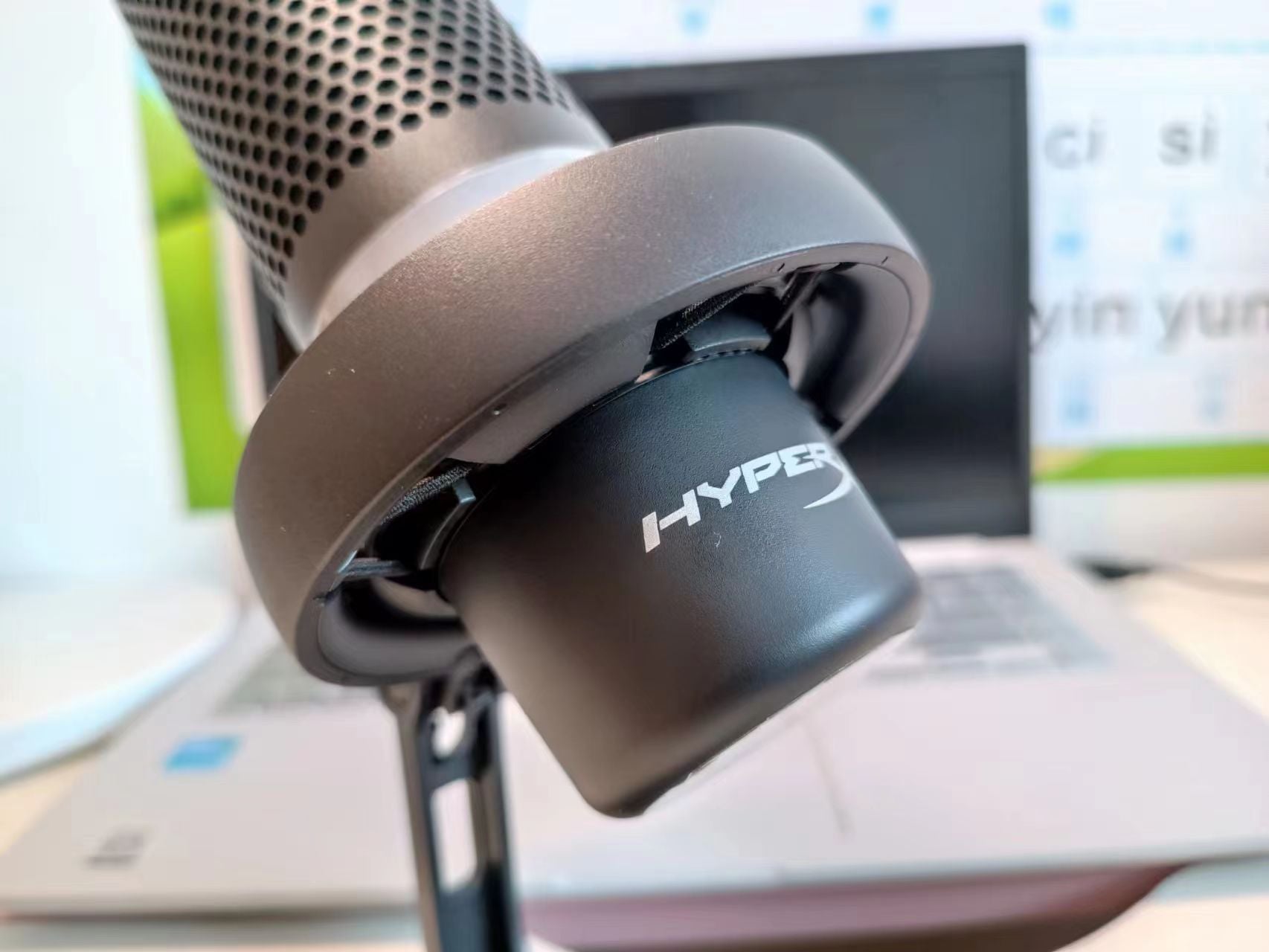
In practice, let's show you the RGB lighting effect of DuoCast: it's not as dazzling as HyperX QuadCast series, but it's bright enough. If it can be matched with headphones and keyboard and mouse with the same RGB light effect, the effect will be added.
HyperX NGENUITY software provides a wealth of options for us to adjust, such as the lighting effect of the microphone, the volume when monitoring, the pickup mode and so on.
HyperX presets up to six lighting effects for DuoCast, such as common solid colors, breathing, cycling, multicolored, etc., and also supports users to customize and add their favorite colors.
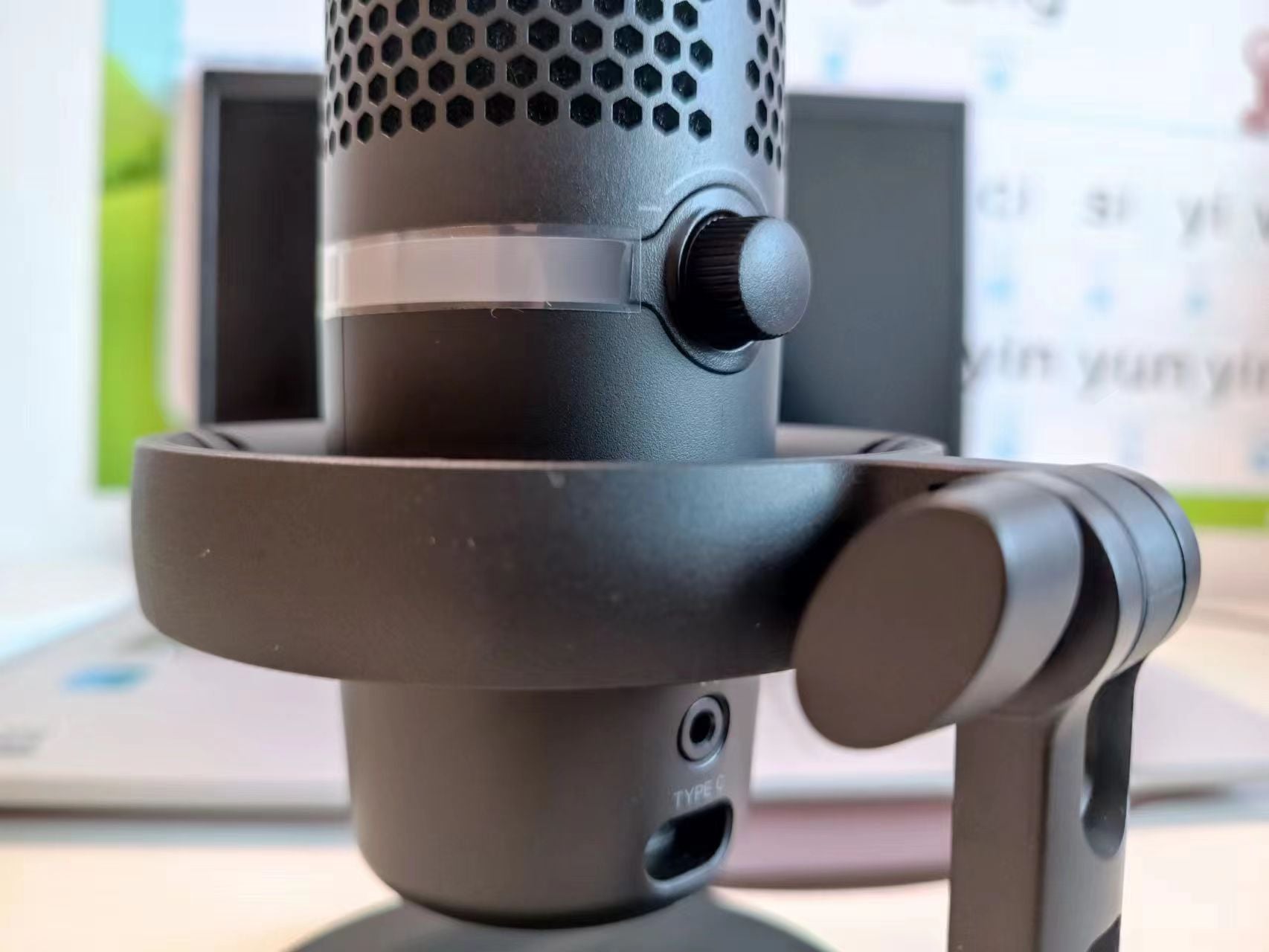
In terms of recording sound effects, the sensitivity of HyperX DuoCast is very high, and it is convenient to switch between cardioid and omnidirectional pickup modes. In use, the heart-shaped pickup direction is concentrated in front of the microphone, which can eliminate background noise very well, and is very suitable for game anchors and one person to record podcasts. The omnidirectional range covers the whole area, and there is no dead angle in 360 degrees. Whether it's a nearby voice, a distant keyboard tap, or even the sound of a room door closing gently, it can be clearly captured, which is more suitable for voice recording that requires a sense of presence, such as podcasts or meetings recorded by many people.
DuoCast's radio is still very accurate, during which there is no stutter, delay, recycling, the sound is clean and clear enough, and there is no background noise, current sound and other noise. With ear return, you can adjust what you want to do in real time. Whether it is the communication between friends during the game, live recording; Or recording podcasts, or even playing karaoke songs can be more handy.
As another member of HyperX's competitive microphone series, DuoCast's positioning card point is very clear, that is, an advanced mid-range product between high-end HyperX QuadCast and entry-level HyperX SoloCast, which has made trade-offs in many functions. Dual pickup mode, RGB lighting effect, shock absorption bracket and NG software support not only improve the overall quality, but also can cope with most of the daily use scenarios, and the price is more affordable. If you are a game anchor or are about to do a podcast program, you might consider it.

